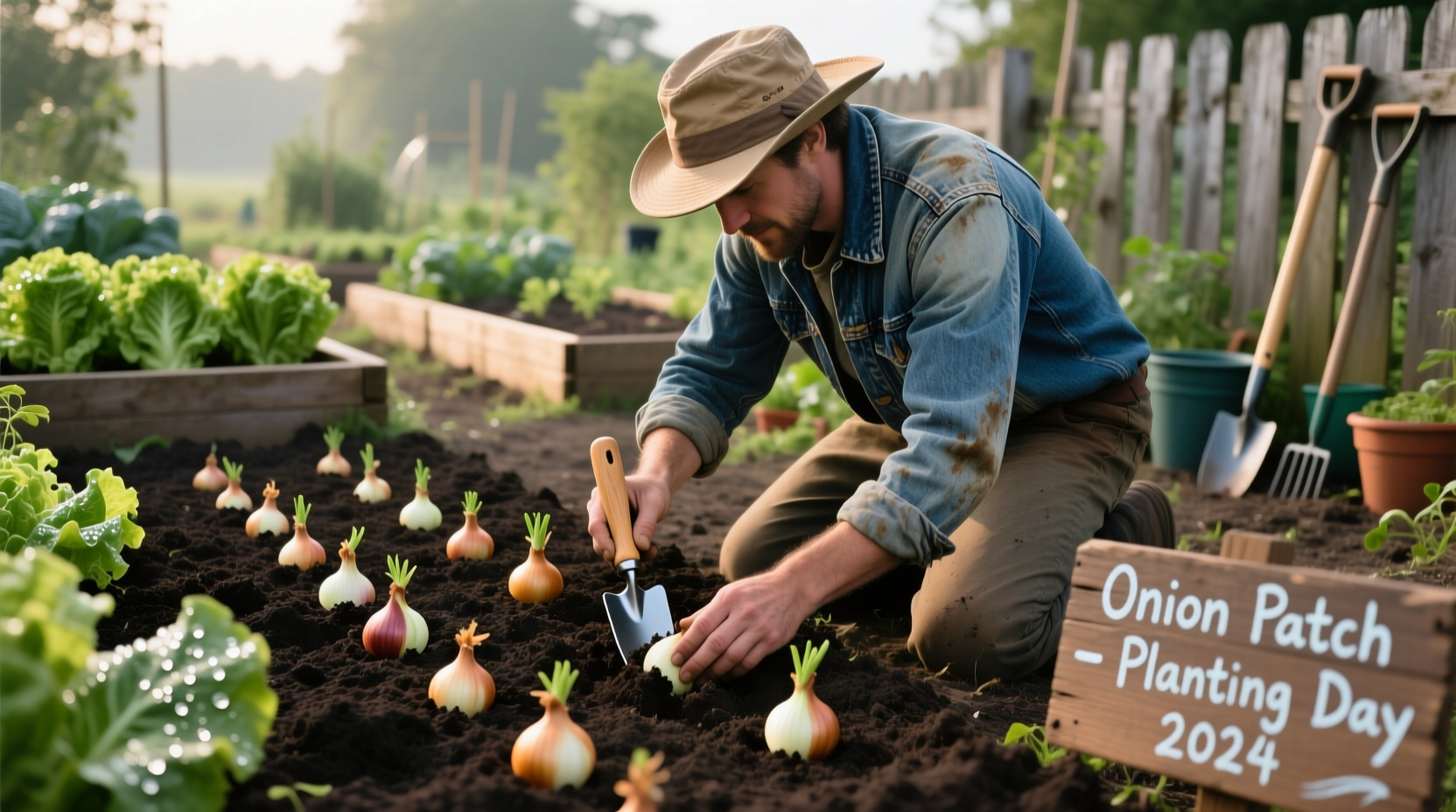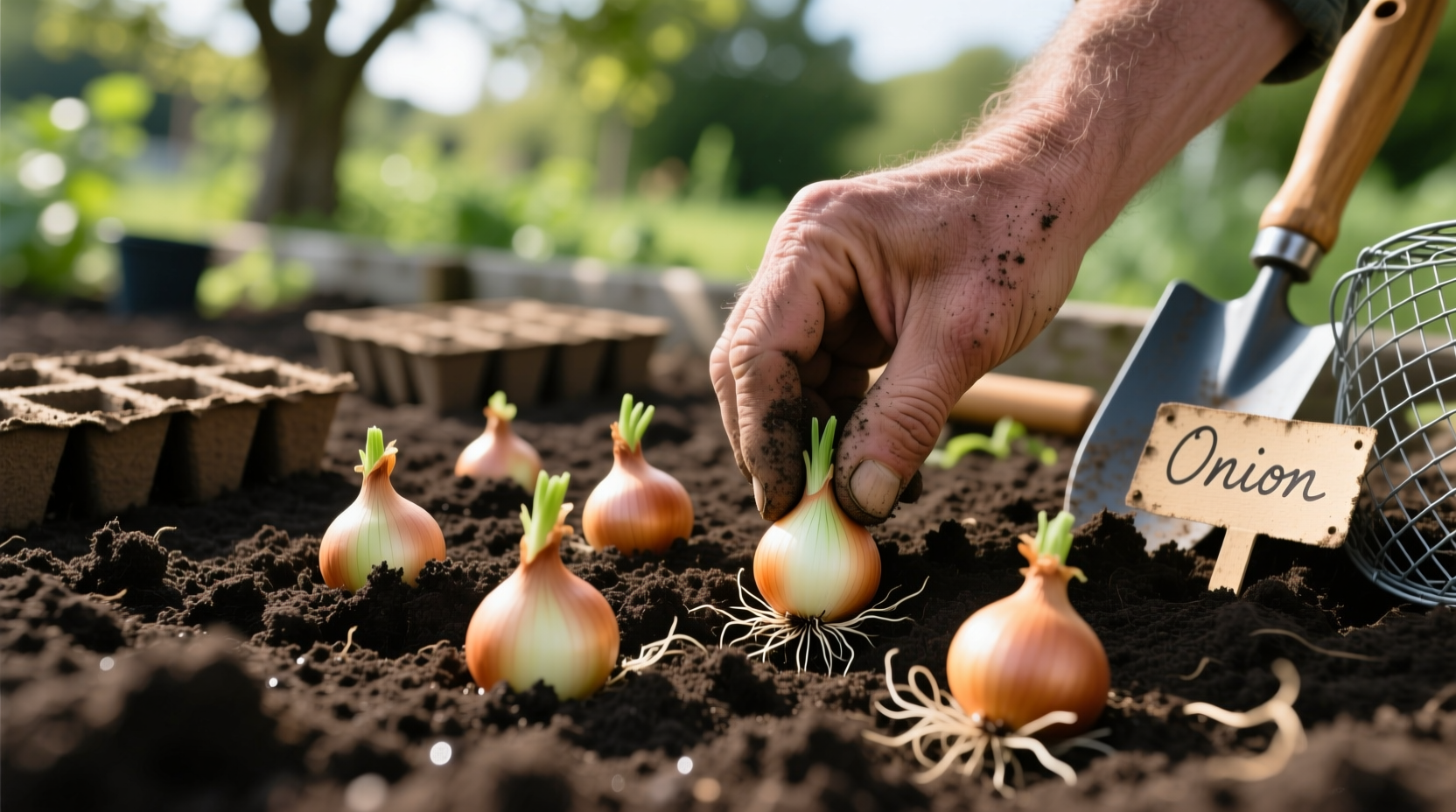Why Onion Sets Are the Smart Choice for Home Gardeners
Onion sets offer beginner gardeners a reliable path to harvest-ready bulbs with minimal effort compared to seeds. These small, partially-grown bulbs (Allium cepa) have already completed their first growth cycle, giving them a significant head start over seed-grown onions. University extension services consistently report 85% higher success rates with sets versus seeds for novice growers in temperate climates. Unlike seeds that require precise temperature control and weeks of indoor starting, sets can go directly into garden soil as soon as frost danger passes.

Understanding Onion Sets: More Than Just Mini Onions
Onion sets are essentially immature bulbs harvested during their first growing season and dried for storage. Available in red, yellow, and white varieties, they typically measure 1/2 to 1 inch in diameter. The primary advantage of sets lies in their reduced vulnerability to weather extremes and pests during the critical early growth phase. According to the Royal Horticultural Society, sets develop functional root systems within 7-10 days of planting, compared to 3-4 weeks for seedlings.
Perfect Timing for Planting Success
Timing your onion set planting correctly determines your harvest quality. The optimal window opens when soil temperature consistently reaches 50°F (10°C) at a 4-inch depth. In most USDA hardiness zones, this occurs 2-4 weeks before your last expected frost date. Northern gardeners (zones 3-5) should target April planting, while southern growers (zones 6-8) can start in late February. For fall harvests in mild climates, plant sets in July for overwintering varieties.
| Growing Method | Time to Harvest | Success Rate | Best For |
|---|---|---|---|
| Onion Sets | 90-120 days | 85-90% | Beginners, short seasons |
| Transplants | 100-130 days | 75-80% | Experienced gardeners |
| Seeds | 120-150 days | 50-60% | Cold-tolerant varieties |
Soil Preparation Essentials
Onions thrive in well-drained, loose soil with a pH between 6.0 and 7.0. Prepare your planting area two weeks before planting by incorporating 2-3 inches of compost and a balanced organic fertilizer. Avoid fresh manure which can cause excessive top growth at the expense of bulb development. Raised beds work exceptionally well for onion cultivation, improving drainage and warming soil faster in spring. For heavy clay soils, amend with perlite or coarse sand to prevent waterlogging that leads to rot.
Step-by-Step Planting Instructions
Follow these precise steps for optimal results when sowing onion sets:
- Separate sets by size (keep similar diameters together)
- Create shallow trenches 1 inch deep using a hoe or stick
- Place sets 4-6 inches apart with pointed end facing upward
- Cover with 1-2 inches of soil (never more than half the set)
- Water thoroughly to settle soil around bulbs
- Apply 1-inch layer of straw mulch to retain moisture
Proper orientation matters significantly - planting sets upside down can delay growth by 2-3 weeks according to Michigan State University Extension research. Larger sets (over 3/4 inch) should be used immediately as they're more prone to bolting.
Seasonal Care Requirements
Consistent moisture is critical during the first 4-6 weeks after planting. Water deeply 1-2 times weekly to maintain even soil moisture (about 1 inch of water total). Reduce watering as bulbs begin to swell in midsummer, and stop completely 2-3 weeks before harvest. Side-dress with nitrogen-rich fertilizer when plants reach 6 inches tall, then switch to potassium-based feed as bulbs form. Weed carefully by hand to avoid damaging shallow roots - onions compete poorly with aggressive weeds.
Climate-Specific Considerations
Day length determines when onions begin bulb formation. Short-day varieties (10-12 hours of light) work best in southern regions, while long-day types (14-16 hours) suit northern gardens. Planting the wrong variety for your zone results in small bulbs or premature bolting. In hot climates, plant sets in fall for winter/spring harvest. Gardeners in zones 9-10 should choose Egyptian walking onions or multiplier varieties that tolerate warmer conditions.
Harvesting and Curing Process
Harvest when tops naturally fall over and yellow (usually late summer). Carefully lift bulbs with a garden fork, then cure them in a warm, dry, well-ventilated area for 2-3 weeks. Properly cured onions develop dry, papery skins that protect against rot during storage. Store cured bulbs in mesh bags or braids in a cool (32-40°F), dark location with 65-70% humidity. Most varieties keep for 4-6 months under ideal conditions.
Troubleshooting Common Issues
Small bulbs often result from overcrowding or nitrogen deficiency. Double the spacing and apply balanced fertilizer if this occurs. Bolting (flower stalk formation) happens when sets experience temperature fluctuations - use smaller sets and plant at proper depth to minimize this. Rot problems typically indicate poor drainage or overwatering - improve soil structure and reduce irrigation frequency. For persistent pest issues, rotate crops annually and use physical barriers like row covers.











 浙公网安备
33010002000092号
浙公网安备
33010002000092号 浙B2-20120091-4
浙B2-20120091-4